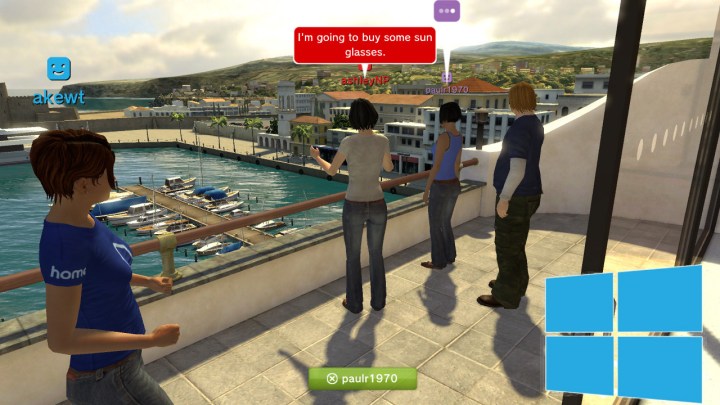
As much as reality-bending technology like the HTC Vive or Microsoft’s own Hololens have all the potential in the world for games, Microsoft is targeting new audiences with its Windows Mixed Reality (WMR) platform. At its recent WMR event, it showed off more of the Microsoft Cliff House, which users will spawn into. Making that a social hub is part of Microsoft’s ongoing plan.
Revealed at the show by Alex Kipman, researcher behind Microsoft’s Hololens headset, he said that the company’s recently acquired VR social platform, Altspace VR, might form a basis for that social transformation. He described it as a “good foundation” for the kind of interpersonal mixed reality platform Microsoft wants to build in the future.
He did make sure to head off any concerns that Altspace VR as it is would change following the purchase, though. “Altspace is going nowhere,” he said, claiming that everyone at Microsoft loved the community that Altspace had created over the past couple of years.
The name has started to appear in Microsoft branding and buzzwords though. In a follow-up statement, Kipman said (via Venturebeat):
“For me the killer app for mixed reality is Altspace communication, the communication fabric of being able to be with all the people you love in a family setting. Or as an employer, to be able to have my people be around the world in a physically present way without actually having to be physically present.”
That’s the social and office interaction that Microsoft wants to leverage with WMR. It wants to build a new generation of platforms and tools for those working remotely or from home, enabling them to work within a collected office environment, without the commute. He went on to describe Altspace and WMR as the “communication fabric,” for mixed reality (thanks, MSpowerUser).
That’s not to say Microsoft is forgetting about 2D though. One of the benefits of augmented reality over virtual reality is that a 2D app can be represented in a unique fashion in the real world. Microsoft will continue to support the development of 2D apps and Kipman said that it will support them across all platforms: Xbox, PC, Hololens and its mixed reality devices.
Editors' Recommendations
- Microsoft finds a sneaky way to slip more ads into Windows
- 7 beloved Windows apps that Microsoft has killed over the years
- Microsoft plans to charge for Windows 10 updates in the future
- Microsoft’s Surface Laptop Go 3 is a more capable budget laptop
- Microsoft September 2023 event: Copilot, Surface Laptop Studio 2, and more




